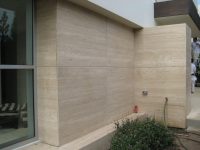Effortless MDF Skirting World Ideas: Creativity And Innovation In Your Home

MDF skirting is a great way to dress up your home’s exterior, as well as add a modern touch. The style also serves another important purpose: it protects the foundation of your home from the elements.
If your house gets rain or snow regularly, you know that eventually it’ll seep through the wall and damage the structure. This is where skirting can come in handy. Skirting prevents moisture from entering your home effectively and quickly, which means you don’t have to worry about mold or mildew.
And since MDF absorbs moisture more than any other material, it does an especially good job at keeping water out in the long run.
That’s why you should invest in MDF skirting for your home right now!
Read on to learn more about how this oldie but goodie can help you elevate the aesthetic value of your property while also protecting it from the elements.
Benefits Of MDF Skirting
– MDF skirting has numerous benefits, including the following:
– Stronger foundation – In addition to protecting your home’s foundation from moisture, MDF skirting also strengthens it. This is due to the material’s ability to absorb moisture, which helps it to withstand more pressure.
– Prevents expensive repairs – MDF skirting is a long-lasting, durable product that prevents many expensive repairs in the future. That’s why you should install it in your home as soon as possible.
How To Install MDF Skirting
Installing MDF skirting is a relatively straightforward process, though there are a few things to keep in mind that can make the job go more smoothly.
Follow the steps below to help ensure a successful skirting installation.
Step 1 – Gather the materials needed for the job. You’ll need a circular saw and a straight edge, a pencil, a utility knife, a level, and a pencil eraser. Also, in addition to your skirting, you’ll need a plywood board.
This board can be used to cover any screw heads or holes that may be exposed when installing your new skirting.
Step 2 – Cut the skirting boards to the desired length, using the saw. You’ll also need to cut the plywood to the desired length. Make sure to account for any overhangs or valleys so your boards are level.
Step 3 – Assemble the skirting boards. You’ll need to arrange the boards so they fit snugly together. To do this, make a mark in the middle of each board, about one-third of the way from the end.
Place an end board at the mark, and then connect it with another board by drawing a line from the mark back to the middle of the board. Repeat this process until you’ve connected all four boards.
Step 4 – Install the skirting boards. Once you’ve completed this step, you’ll need to screw the boards to your home’s exterior. Use a drill bit that’s slightly smaller in diameter than the screw you’re using.
Press the screw into the board until it sits flush with the surface. Repeat this process with all four boards.
Step 5 – Staining the boards. After installing the skirting on your home’s exterior, you’ll need to stain it. This makes the boards look more realistic and prevents them from fading over time.
You can choose from a variety of stain options, including wood grain stains, low-luster finishes, and varnishes at mdfskirtingworld.co.uk.



